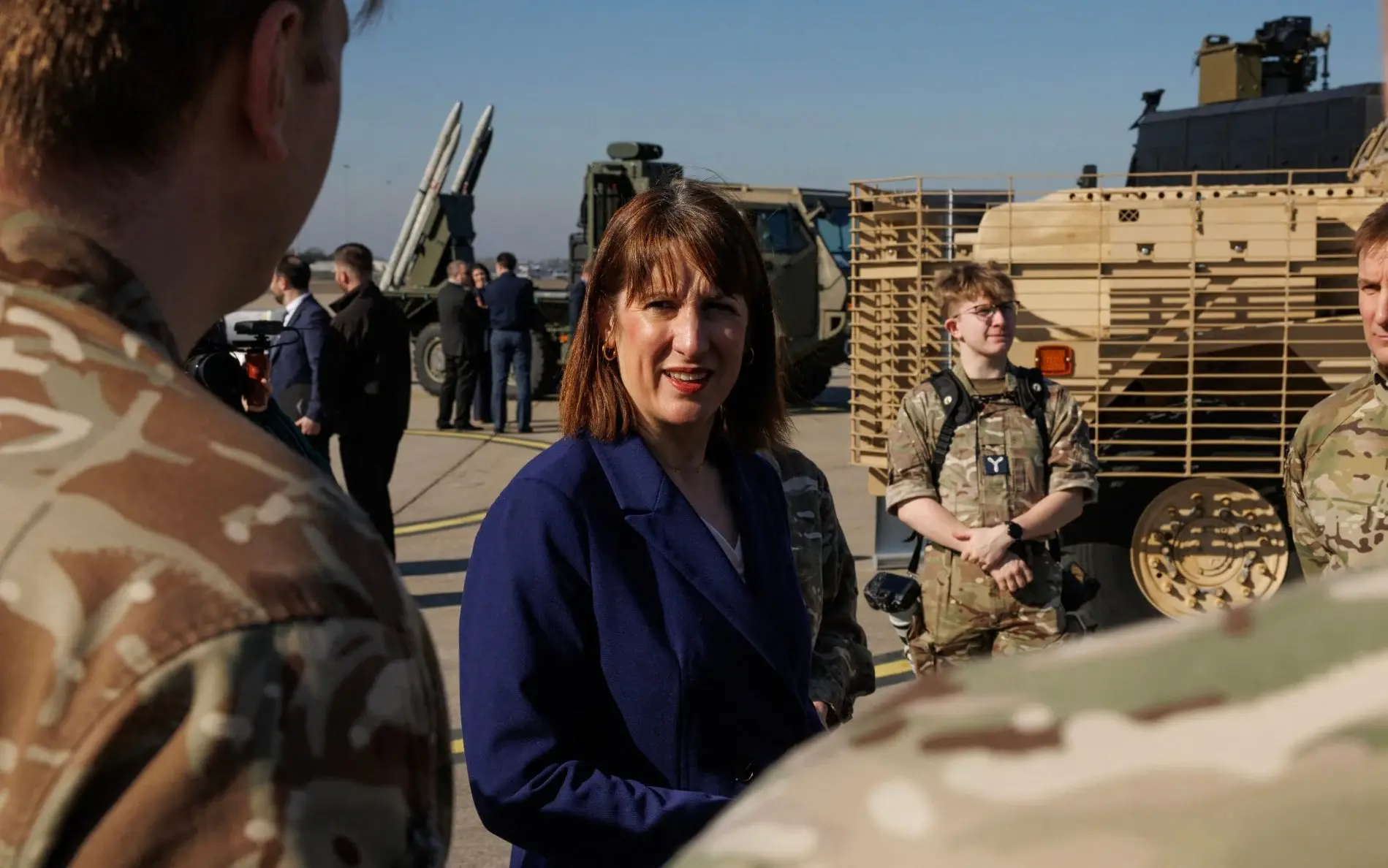UK (Parliament Politics Magazine) – Parliament committee warns Chancellor Rachel Reeves may miss Nato defence target, as the UK needed £9bn by 2027 to meet 2.6% GDP defence spending.
As reported by The Telegraph, a government watchdog warns Rachel Reeves could miss Nato defence spending target.
UK Prime Minister Sir Keir Starmer commits to 5% of GDP on defence over ten years after US President Donald Trump’s pressure amid the Ukraine and Gaza conflicts.
What did the Public Accounts Committee say about UK defence spending?
The Public Accounts Committee warns the government’s defence plan is “extremely sceptical,” raising doubts about affordability.
The committee said ministers need an extra £9bn in two years to meet the Strategic Defence Review’s 2.6% GDP defence target by 2027.
Sir Geoffrey Clifton-Brown, the committee chairman, stated,
“I remain extremely sceptical that the commitments in the SDR are affordable.”
It highlighted that the Ministry of Defence’s 2025-26 budget is £62.2bn, around 2.2% of GDP, compared with 6.4% during the Cold War.
The government needs to secure £9bn more in the next two years to meet the 2.6% defence spending goal by April 2027. The 5% GDP target by 2035 would push the defence budget to exceed £140bn.
The committee’s report said,
“These will of course increase as GDP increases, creating extremely large expenditure commitments without clear plans for how Government will pay for them.”
How experts warn the UK could risk its reputation with Trump over defence target?
Analysts have warned that if the Prime Minister and Chancellor fail to meet defence targets, it could seriously harm the UK’s credibility with President Trump.
Philip Ingram, a defence expert and ex-colonel in British military intelligence, stated,
“Keir Starmer is risking making false promises which will be highly embarrassing and could anger Donald Trump.”
The remarks follow Mr Trump’s call to remove Spain from NATO after its prime minister declined to meet the 5% defence spending target.
In recent months, President Trump has urged the UK and its NATO members to increase military spending amid rising tensions with Russia.
At a White House meeting with Finland’s Alexander Stubb, Mr Trump said all NATO members were “virtually unanimous” on raising defence spending, singling out Spain as the exception, “Maybe you should throw them out of NATO.”
NATO Secretary General Mark Rutte has urged all alliance members to reach 3.5% defence spending by 2032, and 5% by an unspecified date.
The UK plans to reach the goal by combining traditional defence spending with a broader “whole society” category, including security and resilience.
The Public Accounts Committee’s comment raises doubts over whether the goal is realistically achievable.
Labour plans to unveil its defence investment plan, with analysts watching to see how it intends to achieve the promised military budgets.
An insider confirmed the government said it remains fully committed to its spending plans by cutting the foreign aid budget, adding nearly £9bn to the MoD by April 2027.
What did James Cartlidge say about Labour’s defence promises?
The Tories blamed the Chancellor for “tying herself up in knots” over the spending plan, warning it can only be funded through higher taxes.
Referring to the committee’s report, James Cartlidge, shadow defence secretary, said,
“It confirms what we’ve been saying for months – all their promises on defence are unfunded. Unable to make even modest cuts to the spiralling welfare budget, Labour is having to rely on smoke and mirrors to make defence spending look bigger, rather than delivering real cash to the frontline.”
What did the ministry of defence say about defence spending Plans?
A MoD spokesman stated,
“We face a new era of threat, which demands a new era for defence. We are making Britain safer by delivering on the Strategic Defence Review, funded by the biggest sustained rise in defence investment since the Cold War.”
They added,
“As set out at the Spending Review, our increase defence spending to 2.6 per cent of GDP is fully funded by reducing overseas development aid, with an ambition of hitting 3 per cent in the next parliament.”
Gordon Brown’s stance on defence spending and borrowing rules
Former Prime Minister Gordon Brown called on Rachel Reeves to exclude the defence spending pledge from borrowing rules to ease fiscal pressure.
He said spending 5% of GDP on national security by 2035 should be handled jointly, sharing the burden with European allies.
Mr Brown said,
“When you come to the fiscal position, look, there’s one thing that’s happened over the last few months that has been quite unprecedented – to spend 5% on defence expenditure as we want to spend by the 2030s.”
He stated,
“But this is a Nato initiative, this is a European initiative. We should be doing this jointly. We should have either jointly issued bonds or a Nato defence fund, and we should be sharing the cost across the continent, and that should be regarded as something extraordinary and exceptional, outside the fiscal rules.”
Mr Brown added,
“If you look around Europe at the moment, you see that the Germans are looking at what they can do outside the fiscal rules… the French are looking at ways of doing it, the Polish have already done that. What I’m actually asking for is a European-wide initiative. Let’s do it jointly, either jointly issued bonds or individually issued bonds that are simultaneous and therefore seen by the markets as an extraordinary issue.”
How much is the UK spending on defence?
As of 2024/25, the United Kingdom’s defence spending is estimated to be about 2.2% to 2.3% of its Gross Domestic Product.
The UK government plans to increase defence spending to 2.5% of GDP by 2027, with an ambition to reach 3% in the next parliamentary term, depending on economic conditions.


